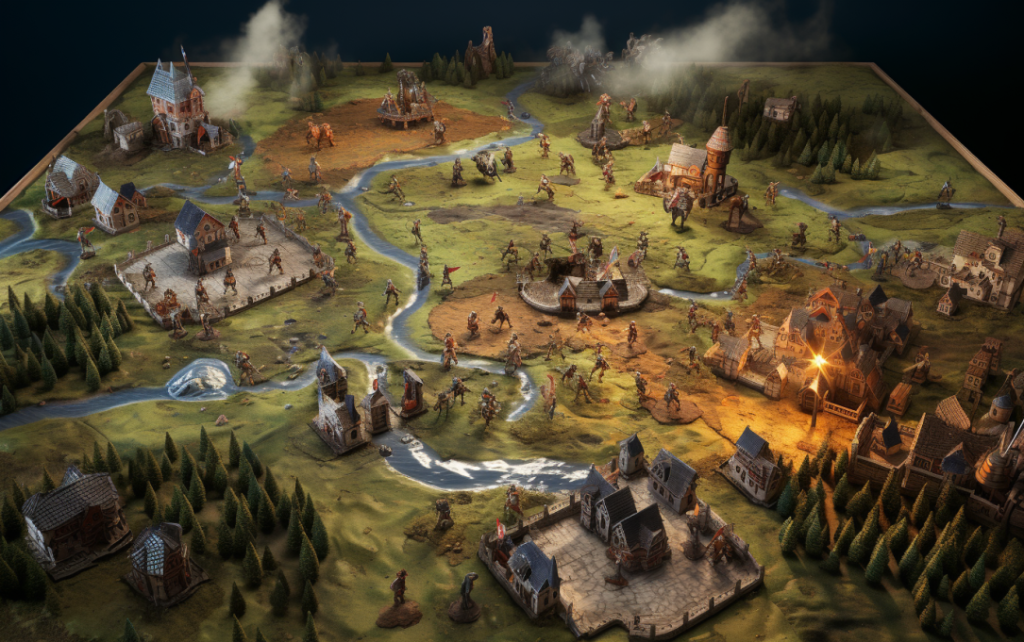Episode 108
In the previous episode, we started a new adventure — a new series: Leader in the Land of Dilemmas. We looked into the mind of a leader wandering in a fog. We climbed together to the peak of the leader’s loneliness. When standing at the crossroads, we had a moment of reflection on what a Dilemma actually is. Ultimately, we reached the Oracle hut and found a mysterious device — the imaginary magic decision-making box.

We must consider what constitutes the input before attempting to produce an output from the device. What are the factors that we have to consider? What is the decision-making context?
Situation
First of all, and the core context is, what happened? What’s the origin of our dilemma, and why do we have to decide in the first place? Perhaps a project manager comes and says that our team member screwed up. Perhaps a client is unhappy with a person’s performance on our team. Maybe a person is dissatisfied with the work and wants to quit. One person claims it’s impossible to work with someone else. A conflict in the team. A problem with the production environment. Difficult 1-on-1 talk incoming. Giving someone a second or third chance after being sacked from yet another team.
Pay-rise negotiations. Team expansion. Moving people between teams or projects. Delegating stuff. Dealing with deadlines and pressure. There are myriads of possible people-related decision points and, hence, leader’s dilemmas.
Consequences
Second – what are the consequences of our decisions? What’s the impact on the business? What’s the effect on people? What’s the impact on clients and everyone else involved? Who is involved? Sometimes, it might not be that obvious, especially as we move from strictly hierarchical organizations to the soft web of informal connections. For example, if we fire someone, the team to which that person belonged will be impacted. In addition, there could have been other initiatives in the person’s company, such as mentoring or recruitment. The consequences might be immediate, or we might feel them in months or even years. If the decision turns out to be bad, is it easily reversible?

What about legal implications? Is the hole in our ship above the waterline or below it?
Business
Third – how well the business is doing is a huge factor. The last few years have been a roller coaster in IT. There was some stability, but then COVID-19 hit, and nobody knew what the hell was happening. Companies were suddenly struggling to pivot and survive. On the other hand, it became clear that our activities needed to move online to continue operations. It was a painful transition for many. It was, however, a lucrative opportunity for others. Once the dust settled, companies with products supporting online presence flourished. So did all kinds of software houses that now had plenty of work helping others with rapid digital transformation. After some time, we had to pay the price for saving the economy from COVID-19 as massive inflation hit. To combat this, interest rates were raised, and funding for new IT projects became problematic. We went from Eldorado into another crisis that’s been going on for quite some time now. When a company has a lot of money, many things and many dilemmas are more manageable — we can just throw cash at it and move on.
Perspectives
The current situation is a set of facts, but it’s perceived differently by the people involved. The world is incredibly complex, and we are tuning our mental models to categorize and simplify all that. Otherwise, our heads would explode. Everyone has their own model of reality in their head. Everyone has different filters and optics of what’s happening around them. Thus, the same situation might cause starkly different reactions and expectations in people.

A good leader has to consider views from multiple angles. When a problem unravels, exchanging views with just two or three people might turn our understanding upside down.
People
People are at the heart of any organization. We treated everyone as a replaceable cog in the machine a hundred years ago. But, fortunately, those times are no more, at least usually in the IT industry or any other industry where we need creative, non-repetitive, cognitive work. We have different personalities, strengths, and weaknesses. People will react differently to your decisions. Some need more time, support, and attention. Some just want to be left alone in a basement and focus on writing software. It’s paramount for any leader to get to know their people and factor this knowledge into their dilemmas.
Seniority
When we are in the people department of our context collection – seniority is often one of the important attributes of people-related decisions, especially in companies focused on services instead of products. “The client wants a team of one senior dev and three middles.” “Perhaps we can sneak by with an additional junior developer as well, at least for some shadowing for starters.” “We need four years of experience for this role.” We’ve all heard similar phrases, especially when working in a software house. Different dilemmas might be associated with our juniors and interns, as well as with our seniors and principals. The definition of seniority may vary across organizations.

We also have to keep in mind that seniority is not just a single label we can put on a person—one can be an amazing developer from a technical standpoint but have no soft skills or attitude whatsoever.
Leader
A leader is a person too! Our personalities can lead us down different paths to the same goal and result in success. In 1939, social psychologist Kurt Lewin identified three main leadership styles — authoritarian, participative, and delegative. Since then, many additions to this list and alternatives have been proposed, including managerial, visionary, paternalistic, transactional, or transformational. When looking at four classic DISC personality types, Red might want to be a leader because it will give him more control, impact, and a powerful vehicle for moving forward quickly. Yellow might like the idea of being in the spotlight, preparing motivational speeches, and painting glorious visions. Green genuinely cares about people and wants more tools to help them grow, support them, and make teams run smoothly. Blue might see the organization as a complex machinery of interconnected moving pieces—alive, inanimate, or virtual, with endless optimizations and polishing opportunities. Does this mean that any of them would be a bad leader? No, they would all be unique and can genuinely shine under different circumstances.
Organization
All leaders and people departments are embedded somewhere in an organization. We have plenty of ways to classify organizations. There is the Quinn & Cameron Competing Values Culture Model, where we can be inward- or outward-focused while maintaining stability and control or flexibility and responsiveness, yielding four org types: clan, adhocracy, hierarchy, and market. There is Frederic Laloux’s model describing stages of development in the book “Reinventing Organizations:” Red — impulsive and authoritarian; Amber — focused on formal roles, stability, and processes; Orange — focused on innovation and meritocracy; Green — pluralistic and value driven; and, recently popular, Teal — evolutionary, focused on self-management.

There are startups, software houses, product companies, big corporations, and state-owned organizations. There are different industries we cater to. For example, a company doing game development will probably have a different culture than a 200-year-old bank. And company culture has a sizable impact on our dilemmas as a leader.
The Hungry Judge
A study on the Israeli parole boards in 2011 found that judges tend to grant parole in 65% of cases at the start of the session, but that percentage drops to nearly zero before a meal break. The phenomenon is known as the Hungry Judge effect. We might draw a parallel to our dilemmas as leaders — when we are hungry, irritated, under stress, or otherwise biologically disturbed, our decision-making is affected. Perhaps it’s better to go for lunch, have a break, relax, or sleep on the problem whenever possible before making a difficult decision, even after considering all other factors.
We have quite a sizable set of inputs for our magic decision-making box we discussed in the previous episode. In the next chapter of our adventure, we will step into the core of the Land of Dilemmas and discuss our outputs individually. There are two extremes and all the shades of grey lurking in between. Stay tuned!